How to Serve Meat to Baby
Meat is a great first food for babies and it can be made into a baby food puree, mashed into a chunky puree, served on the bone, shredded, or served in strips as a finger food or for baby-led weaning. These 6 meat baby food ideas are simple, healthy, and quick to make using beef, chicken, turkey, lamb and pork. This guide is perfect for babies 6 months and up!
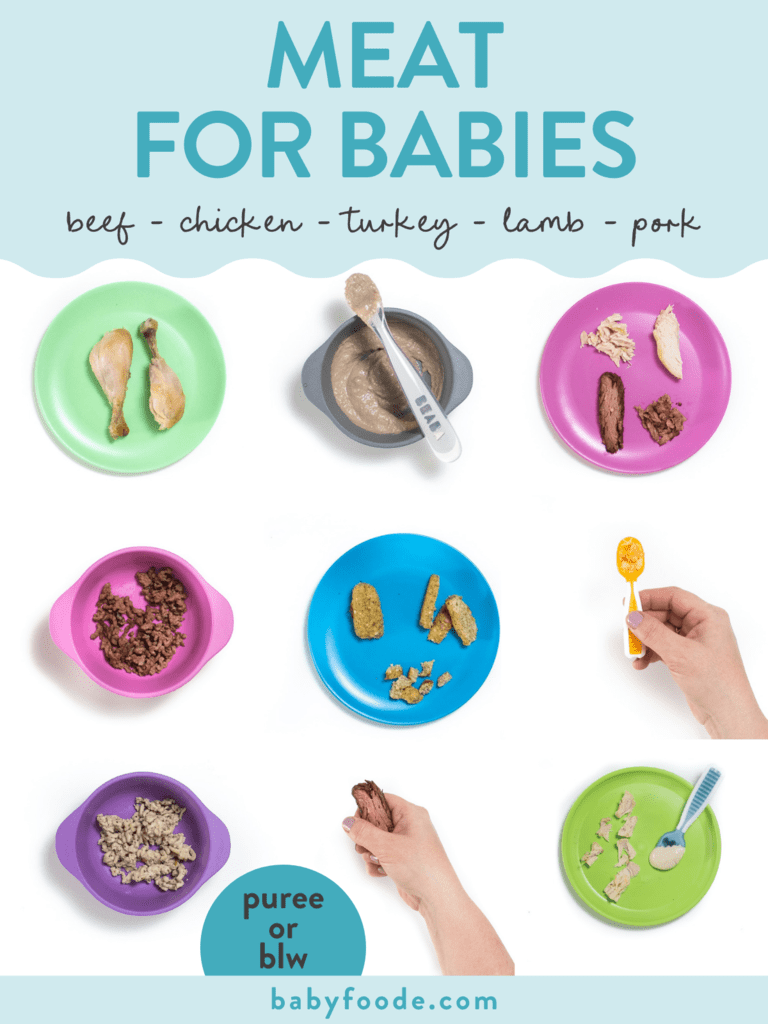
Medically reviewed and co-written by Jamie Johnson, Registered Dietitian Nutritionist (RDN), and Lauren Braaten, Pediatric Occupational Therapist (OT).
Meat Baby Food
Serving your baby meat from the start might seem like an unconventional first choice, but meat is an extremely nutrient-dense food for babies 6 months and up.
This guide will give you 6 easy ways to incorporate meat 🍗 into your baby’s diet – served as a baby food puree, mashed with veggies, served on the bone, made into meatballs, served in strips, shredded or ground. You can serve meat to baby doing purees or baby-led weaning. These recipes are great for babies 6 months – 2 years of age!
First time making homemade baby food? Then, I would suggest that you start by reading my very in-depth Guide on how to Make Homemade Baby Food – which goes over all the important information such as the best cooking tools to have on hand, safe storage, how to know when baby is ready for solids, how to introduce purees, the best first foods for baby, and more! If you are doing Baby-Led Weaning, then be sure to check out my Complete Guide to Baby-Led Weaning – which covers what exactly is baby-led weaning, to every parent’s concern of baby-led weaning and choking, this guide goes over it all. I will also share how to know when baby is ready for BLW, the top 10 best first foods, a helpful sample blw feeding schedule, helpful tools to have on hand, and much much more!
Want more information? Then make sure to check out my best-selling cookbook for even more information and recipes!
Meat for Baby Video
Watch this video to find out how to feed meat to your baby!
Reasons to Love These Meat Recipes for Baby
- can be served as a baby food puree
- also great for baby-led weaning or the finger food stage
- nutrient-dense
- easy to have one meal for the entire family
- excellent sources of protein, zinc, vitamin B12, selenium and niacin
- good sources of iron, vitamin B6, and phosphorous
- puree and ground meat are freezer-friendly

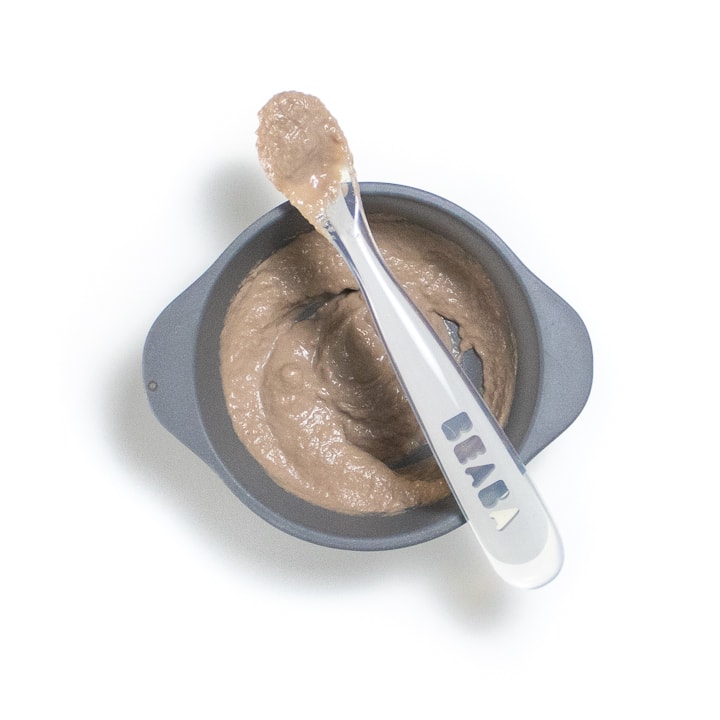

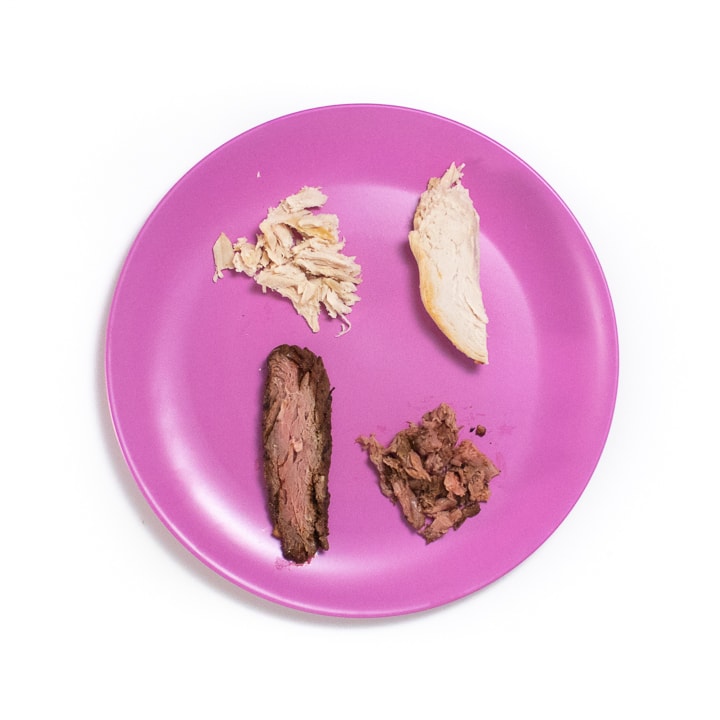
Benefits of Meat for Baby
Different meats will have different nutrient profiles, but in general, meat is an excellent source of protein, which is essential for proper growth and development of all organ systems and for maintaining and repairing tissues. It is considered a complete protein, meaning it has all of the amino acids that are needed to make protein.
Meat tends to be a good source of iron, needed for making red blood cells and for neurodevelopment, and zinc, needed for growth and development and supporting the immune system. Animal sources, including meat, are high in B12, which is essential for brain development and healthy red blood cells.
Best Meat to Serve Baby
There are a variety of meats your baby can eat right from the start! And with so many options on how to serve them, your baby will never get bored. Try serving your baby a new meat dish every week for maximum exposure.
- Beef: served on the bone (ribs), made into meatballs, ground, in strips, shredded or pureed
- Chicken: served on the bone (drumsticks), made into meatballs, ground, in strips, shredded or pureed
- Turkey: served on the bone (drumsticks), made into meatballs, ground, in strips, shredded or pureed
- Lamb: served on the bone (lamb chops), made into meatballs or ground
- Pork: served in strips, shredded, made into meatballs, ground or pureed
You will want to stay away from any processed meats such as bacon, hot dogs, store-bought sausage, ham, deli meat, etc, ideally as long as possible, but at least until 1 year of age, since processed meats tend to be full of preservatives and have been linked to cancer. You will also want to season the meat at home with homemade spices or spice blends and avoid any store-bought marinades, rubs, or sauces as they tend to be too high in sodium and sugar. Make sure all meat is fully cooked to prevent any food-borne illnesses that can be caused by undercooked meat. That means no rare or medium-rare steak for your baby.
Meat Sources: you certainly can buy organic, pasture-raised, and grass-fed meat, which is lower in saturated fat and higher in Omega 3’s and antioxidants than conventional, if you prefer and your budget allows. But conventional meats are also completely safe and healthy for babies.
Frequently Asked Questions
Whether you start baby on purees or are doing baby-led weaning, meat is an amazing first food for baby! When a baby can start on solids is determined by their own rate of development, which generally comes between 4-6 months of age for purees and at or after 6 months for baby-led weaning. Some of the developmental milestones your baby needs to reach in order to start solids include: if your baby has solid control of their head and neck, if your baby has doubled their birth weight, and if your baby is reaching for or opening their mouth when you eat (see my guide here). Before you start baby on purees, you should consult with your pediatrician to make sure your child is developmentally ready.
Yes, meat is one of the more common choking hazards for babies. You want to make sure the meat you are serving to your baby is soft, tender, and appropriately sized for your baby’s age. When in doubt, go for a bigger 2-3′ strip (2 adult finger size) of meat for your baby, or a puree. For safe ways to prepare meat for your baby, see my recommended recipes below. And always be near baby or toddler when they are eating meat of any kind.
The question of how babies can chew foods without teeth, especially meat, makes all of us scratch our heads! But in reality, we all chew food with our back molars, not our front teeth, which baby doesn’t get until 18-22 months of age. Good thing babies have super tough and strong gums, which they use to mash, gnaw and chew foods. Baby’s gums are better at chewing food than you would think, and your baby will be able to chew more foods the older they get, even without their molars.
No, meat is not a common allergen, however, as with any food, start with a small portion and be aware of any signs that might be an allergic reaction after introducing it
No, meat is not known to cause constipation in babies, however it won’t really help with constipation either since it lacks fiber.
How to Cut Meat for Baby
A good rule of thumb to follow is the younger the baby, the bigger the piece of meat. I know it sounds counterintuitive, but the bigger the piece of meat, allows baby to hold onto it while chewing and sucking on it without posing as high of a choking hazard. For babies 6-9 months, you will want to cut the meat into 2-3′ strips that are roughly the size of 2 adult fingers. You can slice the meat thinner for babies 9-12 months or shred it into small pieces.
Storage Instructions
- For Meat Puree: you can store meat puree in the fridge for up to 4 days or freeze individual portions in a freezer tray for up to 2 months. To defrost, gently heat on the stove or in the microwave until warm.
- For Ground Meat: you can store cooked ground meat in the fridge for up to 4 days or freeze individual portions in a freezer tray for up to 2 months. To defrost, gently heat on the stove or in the microwave until warm.
- Meatballs: you can store cooked meatballs in the fridge for up to 4 days or freeze them for up to 2 months. To defrost, gently heat on the stove or in the microwave until warm.
- Meat on the Bone, Strips, and Shredded: can be stored in the fridge for up to 4 days.
Feeding Tips
- Watch for signs that your baby is ready to start solid foods, usually around 6 months of age. Look for sitting with minimal assistance, good control of their head and trunk, bringing hands and toys to their mouth, and appearing interested in what you are eating.
- Throwing spoons is a common phase that all babies go through at one point or another. One of the best ways to handle spoon throwing is to ignore it and keep feeding baby as usual (with an extra spoon you already have at the table). If baby ends up also throwing back up spoons #2 AND #3, simply encourage your baby to eat with their hands until they appear to be finished with the meal.
- Have a spare spoon (or three!) – even very young babies often want to be involved in feeding themselves as much as possible. Giving baby an extra spoon to hold can be helpful in giving her a sense of control and also promotes hand-eye coordination. Allow baby to use spoons as a teether during the meal. There are many great options out there but a few we particularly love include the Olababy 3 Piece Set, the NumNum Pre-Spoon GOOtensils, and the ChooMee FlexiDip Baby Starter Spoons.



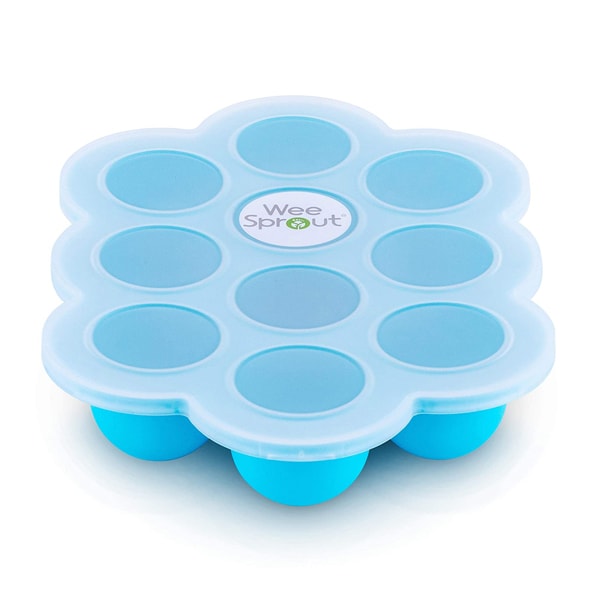
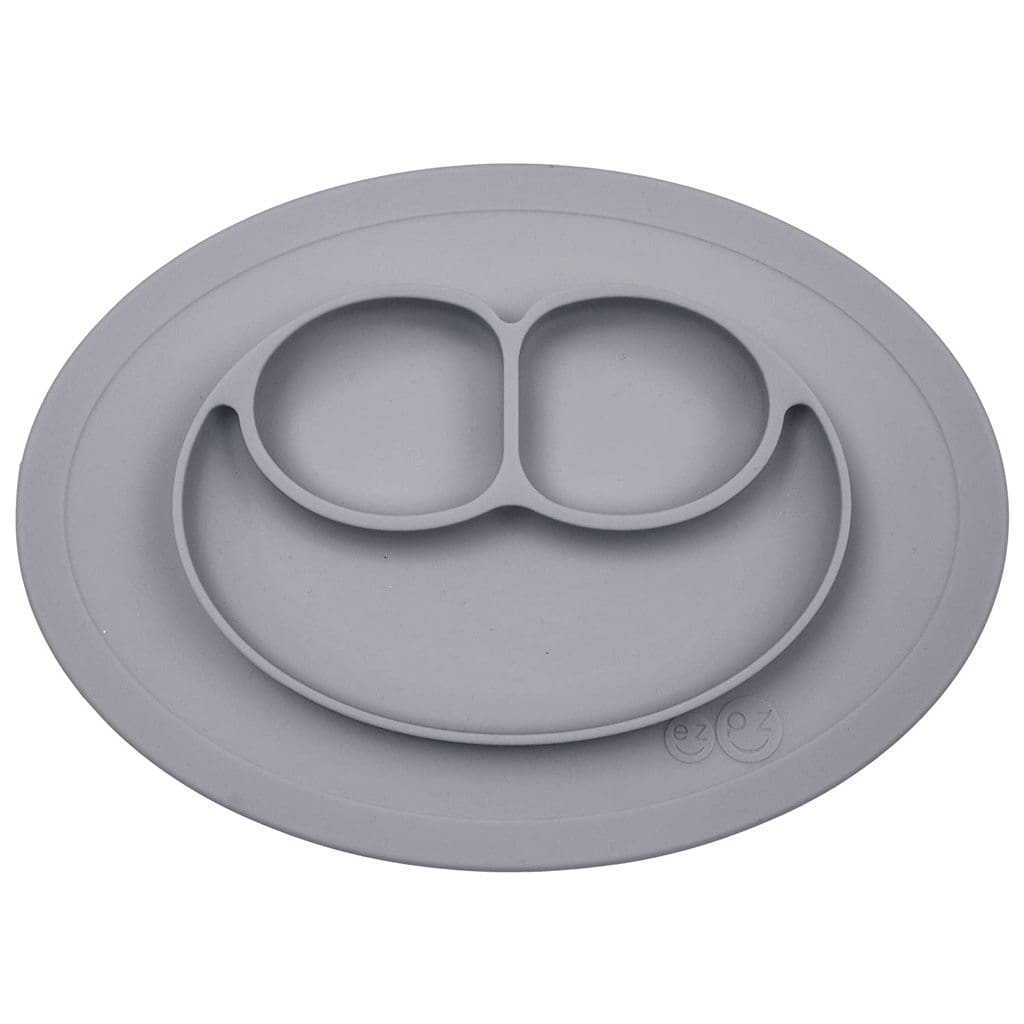
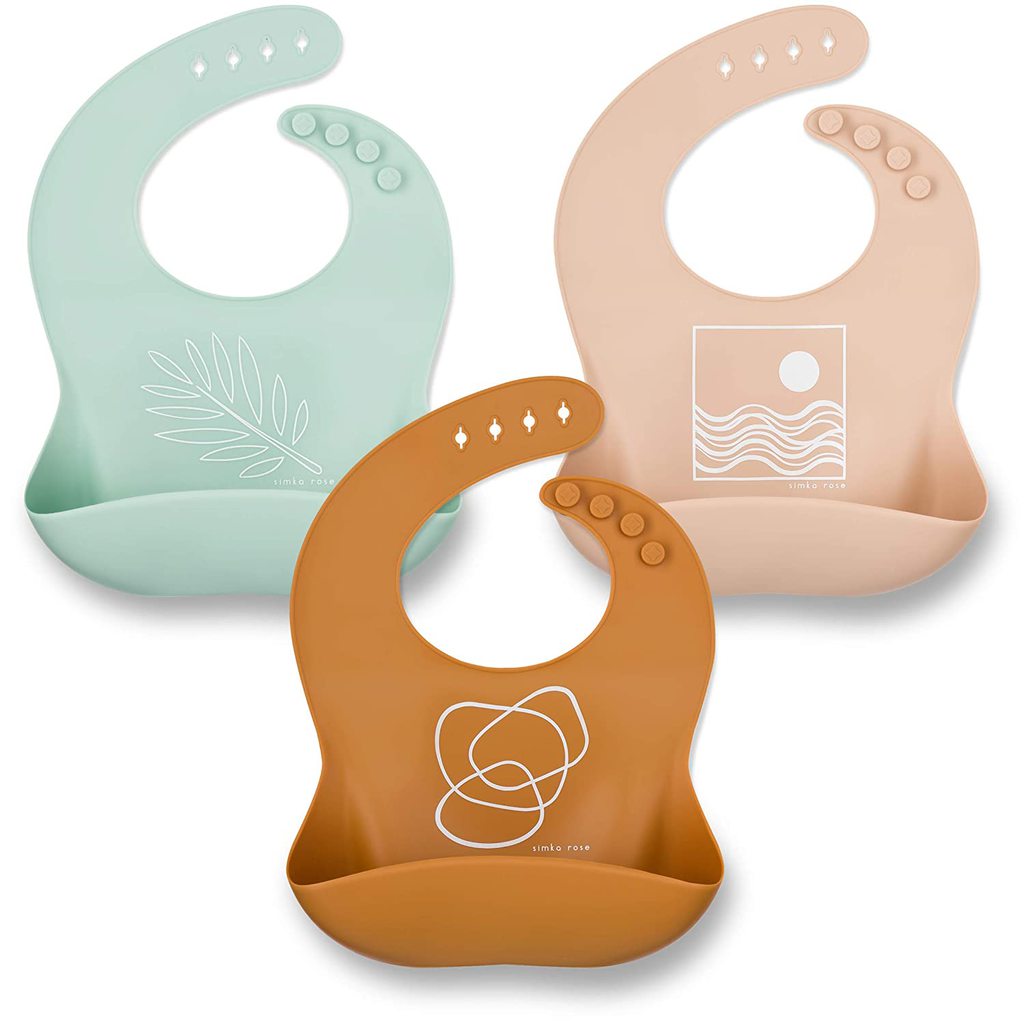
Helpful Tools
These tools will make doing feeding baby so much easier. For more of my favorite kitchen tools make sure to check out my shop.
- steamer basket
- medium saucepan
- storage containers for fridge
- highchair
- suction bowl or baby bowl
- baby spoon
- open lid cup
- bib with catch pocket


Meat Puree for Baby
Serving a meat puree to your baby is a great way to expose your baby to the taste and nutritional benefits meat has to offer. While you can serve baby just the meat puree, it does have a very intense flavor that some babies may not care for. If this is the case, I would recommend you add a spoonful of chicken, beef, or turkey puree into another fruit or veggie puree your baby likes. Some great combinations are beef with sweet potato puree, chicken and mango puree, or chicken and broccoli puree. Since meat is not a common allergen, you can serve a meat combination puree as soon as your baby has tried the other fruit or vegetable. You can also serve baby a chunky mashed meat and veggie puree (recipe below) for a simple stage two puree.
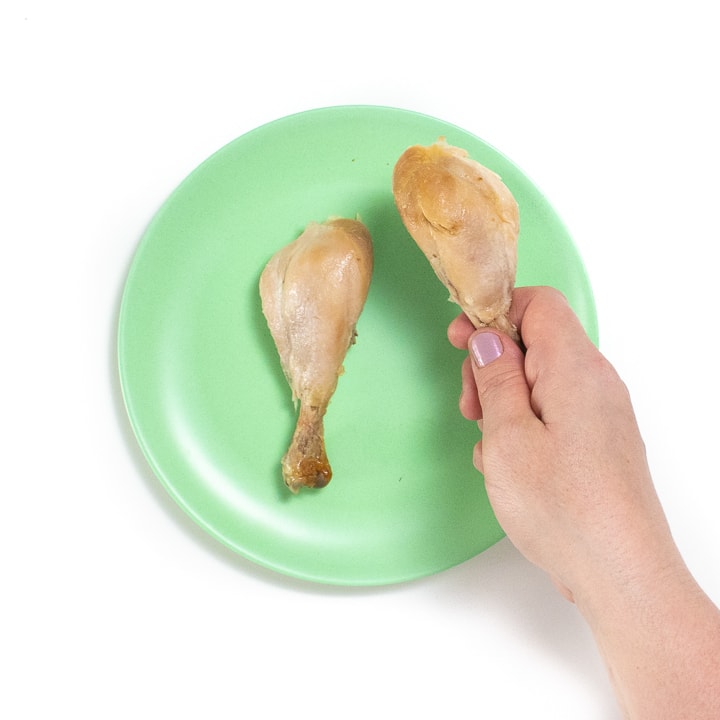


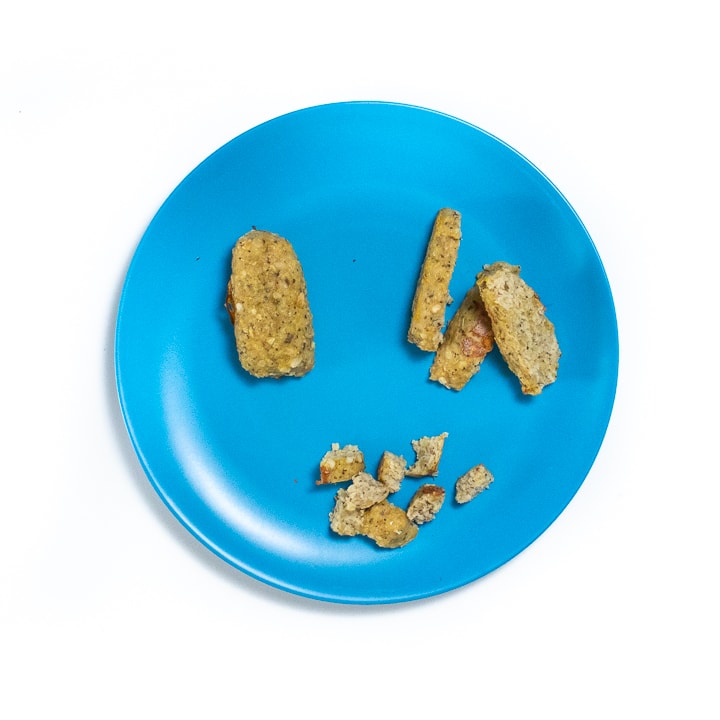
Meat for Baby-Led Weaning
It’s very easy to serve meat to babies for baby-led weaning starting at 6 months or as a finger foods starting at 9 months. You will want to start by serving baby the bigger pieces of meats (ribs or drumsticks, 2-3 inch adult finger size strips, or longer meatballs) and work your way down to the smaller pieces as your baby develops their pincer grasp, usually around 9 months of age.
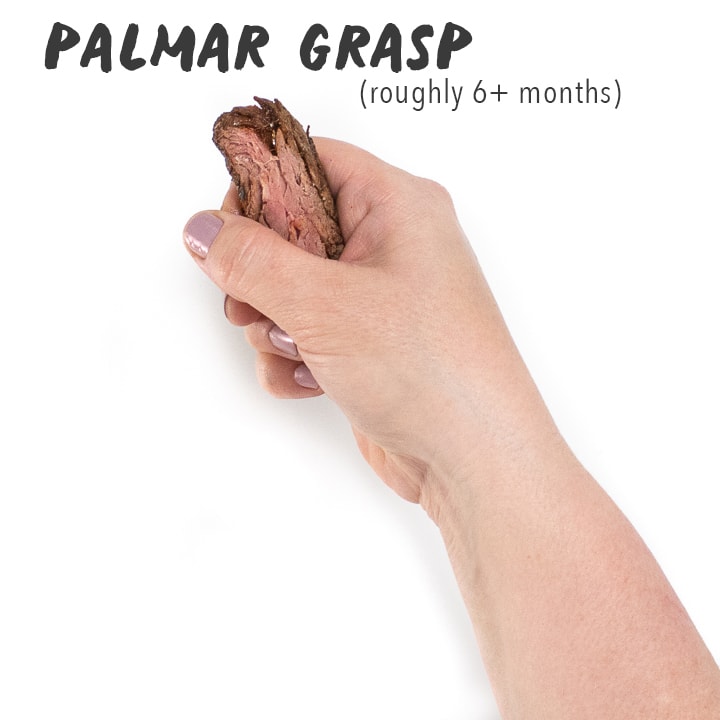

Palmar vs. Pincer Grasp
Palmar grasp and pincer grasp can be confusing, so let’s go over the basics.
Palmar Grasp
The palmar grasp is when your baby takes an entire 2-3′ piece of food and places most of the food into the palm of their hand with their fingers curling around the food. This leaves a small portion to stick out of the top of their hand, which is what they will chew on. The palmar grasp usually develops around 6 months of age, making it the first way your baby will move food from their plate to their mouths.
Pincer Grasp
A pincer grasp is when a baby uses their index finger and thumb to pick up smaller pieces of food. A baby will typically develop a pincer grasp around 9 months of age but can vary as all children develop at different rates.
HOW TO SERVE MEAT TO BABY
There are several different ways to prepare meat for baby. Here are 6 of my favorite ways:
- Meat Puree (4-6+ Months)
- Mashed Meat with Veggies (6+ Months)
- Meat on Bone (6+ Months)
- Meatball or Patty (6-7+ Months)
- Ground (8-9+ Months)
- Shredded or 2-3 inch Strips of Meat (Strips – 6+ Months, Shredded – 9+ Months)

Meat Puree for Baby
You can serve baby pureed chicken, beef, or turkey puree. The key to making delicious pureed meat is to keep the meat tender during the cooking process. I like to simmer the meat in a low or no-sodium broth until just cooked before letting it cool and then blending until smooth. You can add veggies such as onions, carrots, celery, and red peppers to the broth for extra flavor. Once made, the meat puree will last 4 days in the fridge or 2 months in the freezer.
Meat to Use: you can use chicken, beef, turkey or lamb to make a baby puree.


Meat on the Bone
While serving meat on the bone to your baby may seem a little intense, it’s actually the perfect food for small hands to grasp and be able to self-feed as the bones make for the perfect handle. Make sure to remove any skin, fat, or small bones before serving.
Meat to Use: You can serve baby chicken or turkey drumsticks, ribs, or lamb chops.



Meatballs for Baby
You can serve meatballs for babies starting around 6-7 months of age. I love to make homemade meatballs for baby so that I can form them into long finger shapes, which are easier for babies to grasp and eat. You can also slice the longer meatballs into strips or chop them into smaller ‘pea’ size pieces. If using store-bought meatballs, look for a brand that doesn’t have a ton of added ingredients and has lower sodium. If serving a round meatball to your baby, you can cut it into quartered strips or small pieces.
Meat to Use: you can use beef, chicken, turkey or lamb to make meatballs for baby.

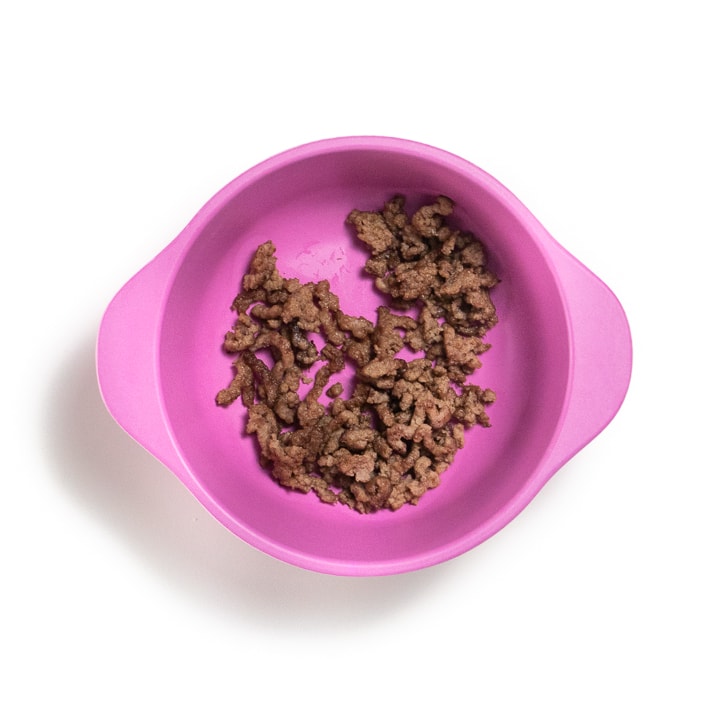
Ground Meat for Baby
Serving cooked ground meat is a great way for your baby to eat meat, as it is soft and tender than other cuts of meat, which makes it easier for your baby to chew and swallow. I also love that you can add in seasonings such as dried oregano, basil, paprika, garlic powder, mild chili powder, etc, to your meat while cooking to give it an exciting seasoned taste. You can serve ground meat to babies 9 months and up that are working on their pincer grasp or load some of the cooked ground meat onto a baby fork or self-feeding spoon to feed them or hand the utensil over to your baby to feed themselves.
Meat to Use: Feel free to use ground turkey, chicken, beef or lamb.

Pulled or Strips of Meat
The first food my daughter ever had was a huge piece of steak she grabbed off of my husband’s plate! Pulled (shredded) or strips of chicken, beef, pork, lamb, or turkey are one of the easiest ways to serve meat to babies. Take a 2-3′ strip, which is roughly the size of two adult fingers, of meat that you are going to have for dinner and serve it to your baby. You can also shred the meat into smaller pieces for slightly older babies (9+ months). Just make sure you remove any skin, fat, hard pieces, or small bones before serving.
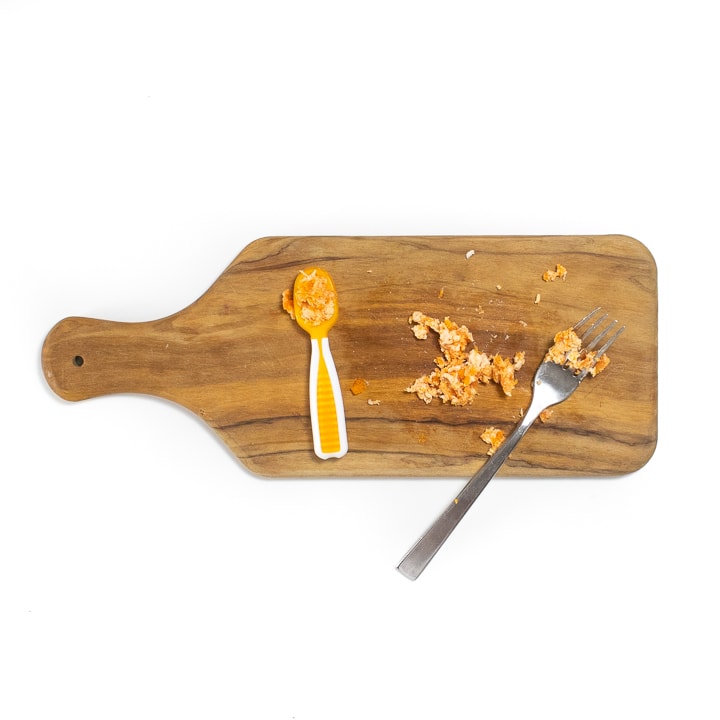

Mashed Meat with Veggies
This method works great for babies on Stage Two or Stage Three baby food purees or just starting on finger foods. To make this, you will mash a small piece of chicken, beef, or turkey along with a spoonful of cooked veggies such as carrots, sweet potatoes, or broccoli until they are combined yet still slightly chunky. Then you can feed baby this chunky puree, or you can load a self-feeding spoon and have them feed themselves.
Tips
- Soft and Tender: With whatever meat you are serving, make sure it is soft and tender to make it easier for your baby to chew. You don’t want to serve baby tough overcooked meat, skin, small bones, or pieces of fat as those are all choking hazards.
- Serve a Variety: make sure you serve your baby various meats in a few different variations to diversify their textures and tastes, which helps with picky eating. Don’t be afraid to step out of your comfort zone and offer baby chicken liver, veal, mutton, goat, buffalo, or organ meats such as heart, kidney, and liver.
- Choose Dark Meat: offer baby dark turkey or chicken meat whenever possible as it has almost double the amount of iron in it.
- Serve Fully Cooked Meat: Ensure you are serving your baby fully cooked meat as “rare” and “medium rare” are a no for baby.

Get the recipe: How to Serve Meat to Baby: Chicken Meatballs
Ingredients
- 1/2 pound ground chicken or turkey
- 1/4 cup breadcrumbs
- 1 large egg
- 1 tsp dried oregano or basil
- 1/2 tsp garlic powder
Instructions
- Prep: If baking, preheat the oven to 400° F. Line the baking sheet with parchment paper or a silicone mat and coat with a little cooking spray.
- Mix: In a medium mixing bowl, add all of the ingredients. Mix together with your hands or a spatula until just incorporated.
- Form: Roll the mixture into 3" long rolls – roughly 10 in total. Place on the baking sheet.
- Bake: Place the baking sheet in the oven and bake for 20 minutes or until done all the way through. Let cool and serve to baby.
Notes
Did you make this recipe?
Tag @babyfoode on Instagram and hashtag it #babyfoode!

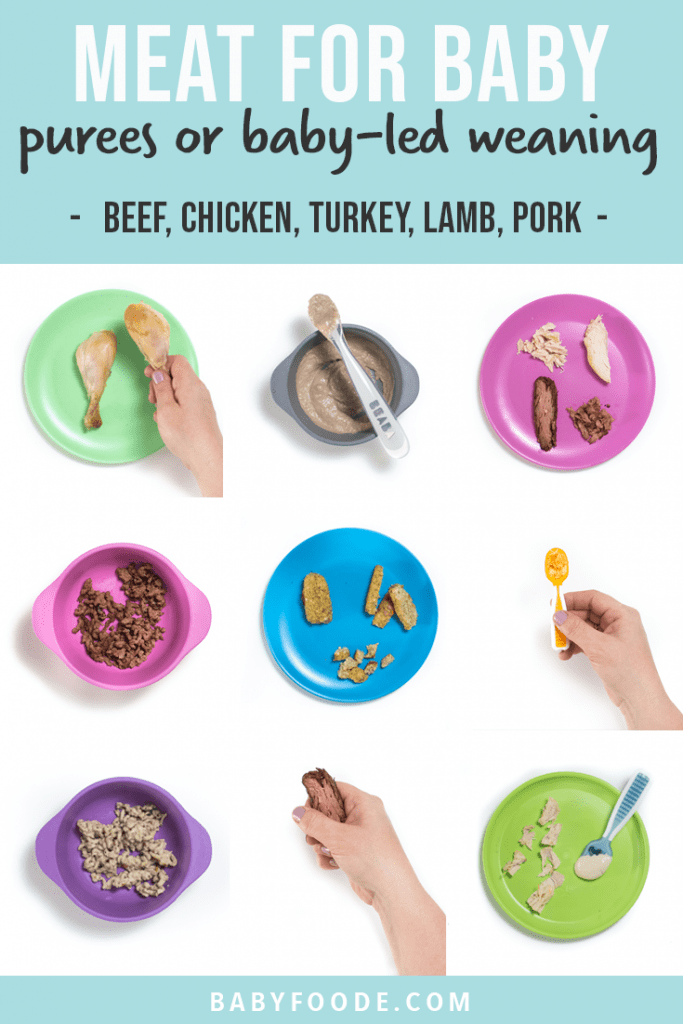
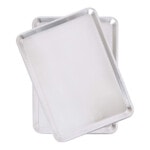


11 Comments on “How to Serve Meat to Baby”
Can you use this meatball recipe with beef?
Yes, you can:)
What do I do if baby has egg allergy? What other combining ingredients can I use
You can use 3 tbsp plain whole yogurt instead or baby food puree (apple, sweet potato, carrot or pear). Hope that helps.
Yes it does thank you!
And what about egg and dairy allergy?
Can you not freeze any shredded meats?
I have tried freezing and reheating shredded meat, but I have found that re-heating the shreds makes them too hard for baby. If you know a hack for this, please let me know.
I gave it a try and I found that adding in about a Tsp of water to a baby’s handful of shredded meat before popping it in the microwave did the trick! And then after all my trial and error. She threw it on the floor. 🥲😂
Hi! Do you know what the sodium content is in this?
Which recipe were you looking for more sodium information on?